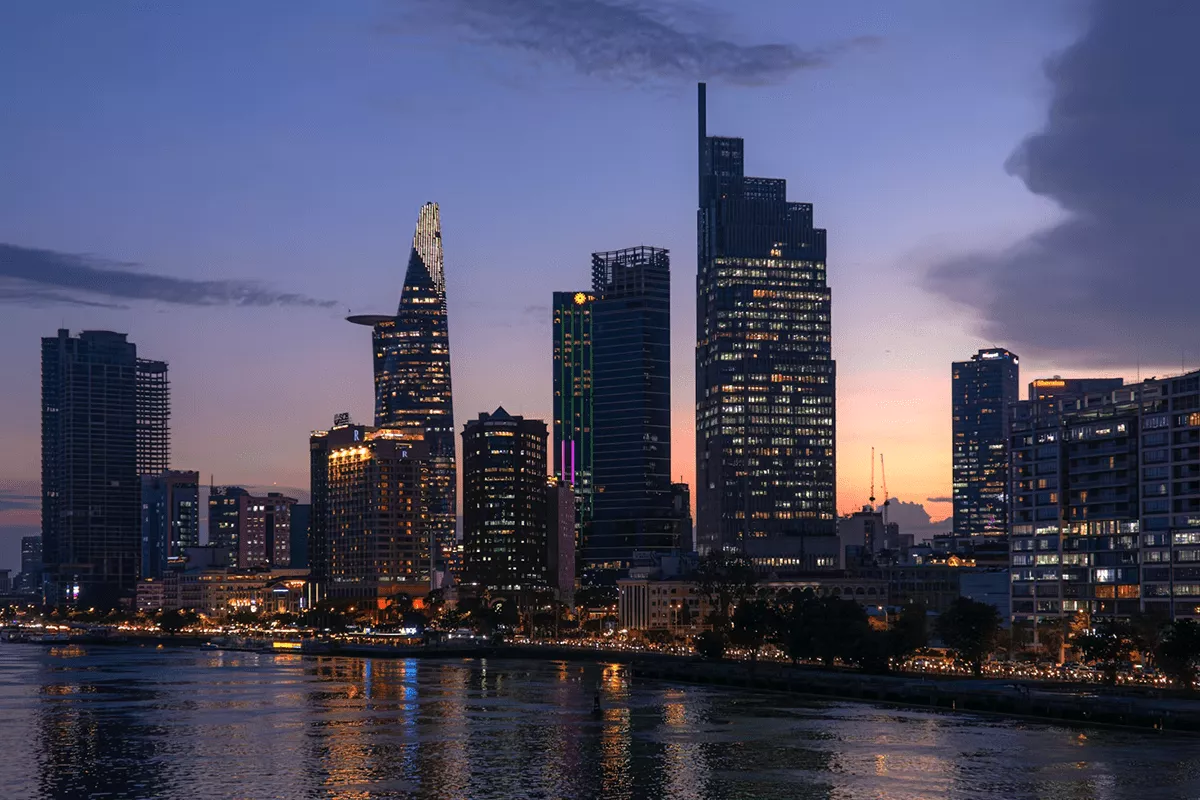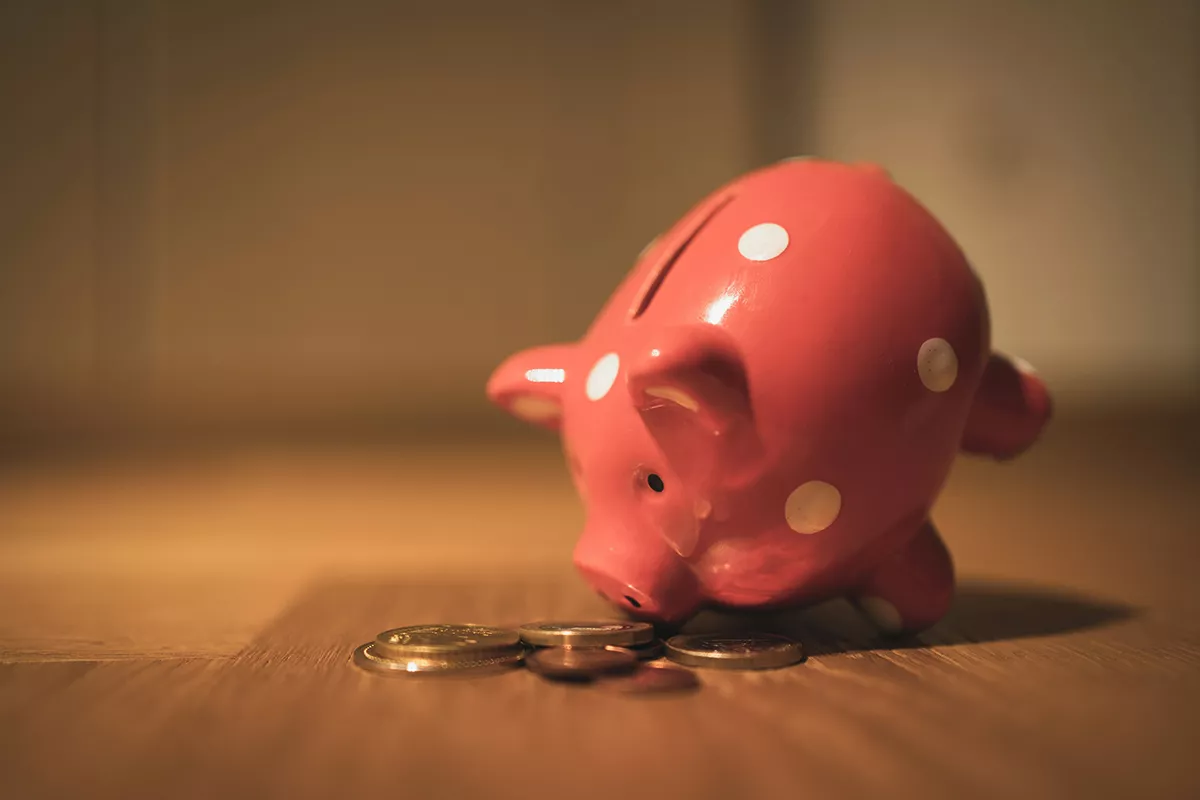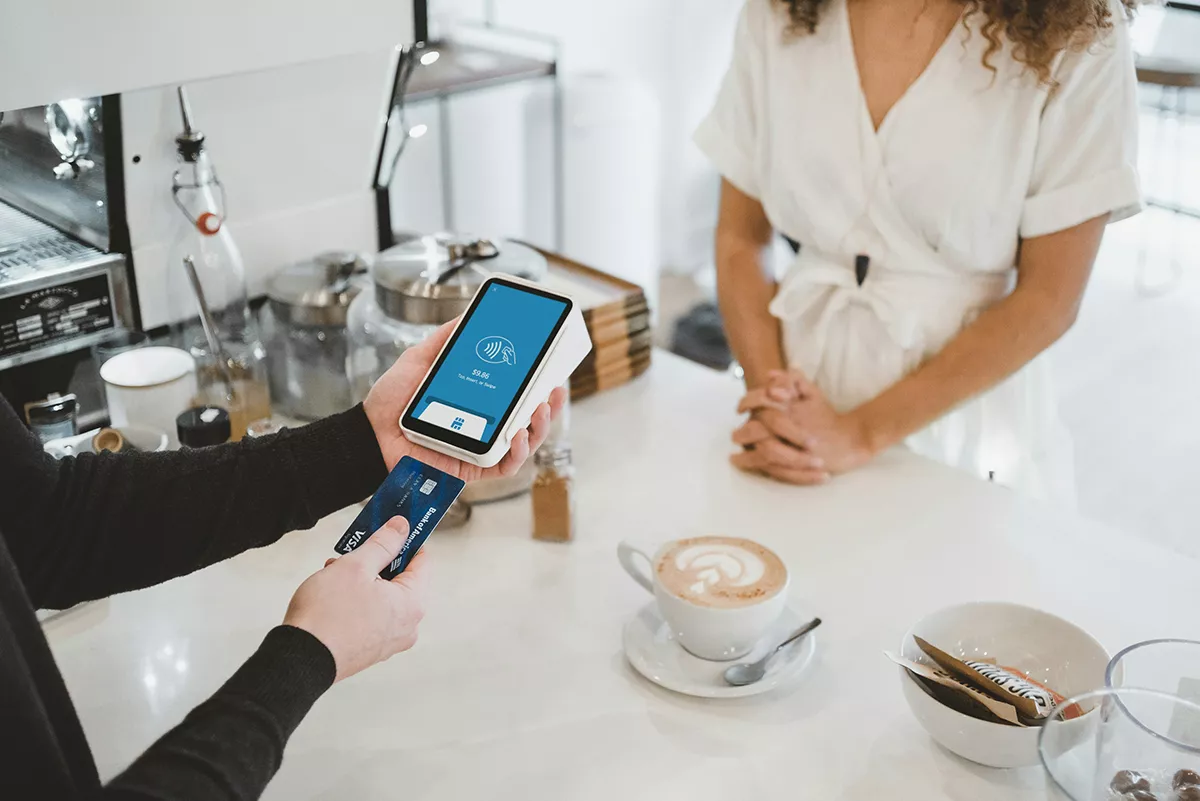The idea of “paying with plastic” has been around for longer than you might imagine. The United States was first introduced to the concept in the 1940s and 1950s, with the very first Air Travel and Diners Club cards. Today, late into the second decade of the 21st century, many Filipinos have yet to catch on to using credit cards for cashless payments. A survey done by VISA in 2017 noted that the Philippines lags behind its Southeast Asian neighbors in the use of credit cards for financial transactions—despite 6 out of 10 Filipinos preferring cashless payments for their safety and convenience, only 9% of them actually use credit cards.
So, what is it that keeps the average Pinoy from applying for their own credit card? The top reasons include strict requirements from issuing banks, the pervasive idea that credit cards are exclusively for rich people, and the widespread notion that a credit card is a one-way ticket to being in debt. In truth, however, the Philippines’ cashless payment landscape is fast-changing—it’s now easier than ever to apply for a credit card, thanks to the digitization efforts of banks; credit card networks are increasingly expanding to include many of your favorite stores; and there are credit card types to suit everyone, from modest earners and big spenders to frequent fliers and shopping aficionados.
This is the perfect time to read up on how credit cards work, what types of credit cards are available in the Philippines, what you’ll need in order to get approved for your own credit card, and the top credit card options for Filipinos of different backgrounds. Learn everything you need to know about credit cards through this comprehensive guide.
Table of Contents
ToggleWhat Is a Credit Card?
Simply put, a credit card is a plastic payment card that’s issued by a financial institution, allowing the registered cardholder to pay for products and services with borrowed money. Since you’re not constrained to spending only the money you have at hand, a credit card will allow you to make big-ticket purchases in a very safe, fast, and convenient way. In exchange, you will be allowed to repay the money to your bank free of additional charges within a particular time period—for example, between 25 and 30 days. If you pay that amount later than the date that you and your bank agreed upon, you’ll be charged for credit card interest on top of the amount that you borrowed, as well as for other financial services.
Each credit card also has its own spending limit, or the maximum amount that you can use for expenses per payment cycle. This amount depends on the type of credit card, the rules of the issuing bank, and how “credit-worthy” a bank judges you to be. Banks know that credit cardholders have a lot of freedom in how to spend their money—and that’s why they’ll look for discipline, proof of money management skills, and dependability before they issue a credit card in your name.
Credit Cards: Some Important Terminology
You might come across some technical-sounding terms when applying for a credit card. Don’t let the jargon scare you out of the process because once you learn what these words mean, you’ll be much less apprehensive about being a cardholder!
- Credit limit. The credit limit is the highest outstanding balance that you’re allowed to have on your credit card. For example, if your credit limit is PHP10,000 per month, your total purchases for the month must amount to exactly PHP10,000 or less—if you go beyond this set limit, you may face a penalty from your bank.
- Credit availability. Credit availability is the amount of credit that you can currently use for spending, relative to your credit limit. If you have a credit limit of PHP30,000 per month on your card, and you’ve already spent PHP10,000 in the first week, then your credit availability for the next three weeks is PHP20,000.
- Annual credit card fees. Your annual credit card fee is the amount that your bank will charge you for every year that you enjoy the privileges of being a cardholder. However, some banks advertise credit cards whose annual fees are free for the first year.
- Interest. Interest is the percentage of the money that you owe the bank if you don’t pay your credit card balance on time. The interest will increase for every day past the deadline that you don’t pay up. As such, if you don’t want to go into debt, be responsible for paying your credit card bills!
- Credit history. Your credit history is your record of how well you manage borrowed money, which is in turn used by banks to score your creditworthiness. Although the Philippines doesn’t have a unified credit score system like that of the United States, it’s still important to gather proof that you’re responsible for large amounts of money. Once you can prove this to your bank, you’ll have an easier time getting approved for your card and for other financial privileges, such as business loans.
- VISA and MasterCard.What should you know about the “VISA” or “MasterCard” imagery that will appear on your credit card? It’s that these two companies are the world’s best-known payment processors, although they do not issue credit cards themselves. Both VISA and MasterCard use their networks to partner up with top banking institutions around the world—including our own Philippine banks—in order to process cash-free credit card payments to millions of merchants that accept them.
What Are the Different Types of Credit Cards?
There are four main types of credit cards that a would-be cardholder can apply for. They are the following:
1. Standard unsecured credit cards
This is a type of credit card in which the cardholder is not required to put down a security deposit or to pledge collateral in order to get their card. Unsecured credit cards may be the most commonly known type of card among Filipinos, but there is a reason only a chosen few get their applications for them approved. Banks are more stringent in their requirement for unsecured credit cards, requiring that the applicant have a good credit score, a great track record with money, and sufficient income to fund large credit card purchases.
2. Secured credit cards
Secured credit cards take their name from the security deposit, or collateral, that the cardholder needs to pledge to the bank in order to reduce default risk. If ever it comes to the point that the cardholder cannot make their credit card payments, the bank is cushioned against loss by the security deposit or collateral.In contrast to unsecured credit cards, secured credit cards are much easier to apply for. First, there’s less pressure on you because you’ve already given the bank evidence of your commitment to pay via the security deposit or collateral. Second, putting down a security deposit may eliminate the need to show very detailed proof of income. And third, if you ever miss one of your credit card payments, your bank can easily deduct the amount you owe from either your account or from your security deposit.
A secured credit card is the ideal type of credit card for a new credit card user, as it can be a means to build up a good credit history from scratch—and, ultimately, acquire an unsecured credit card with more spending freedom.
3. Balance transfer credit cards
Banks that offer balance transfer programs may also offer balance transfer credit cards, which allow the cardholder to move existing debt from one credit card to another. The difference is that the balance transfer credit card will come with much lower interest rates than the first card. While the bank fronts the existing balance to the first card’s original creditor, the cardholder can pay back their debt at lower interest and in multiple installments, depending on the terms that they agree upon with the bank. This is a great credit card option for cardholders who want more breathing room in managing their credit card debt, and who want to slowly build back their credit score.
4. Rewards credit cards
Rewards credit cards are credit cards tied to specific rewards programs, such as for gasoline, retail, supermarket goods, medicines at drugstores, airline miles, and many more. These cards are meant to be used as frequently as possible so that the cardholder can accumulate rewards points, score rebates, or qualify to receive freebies. As you can imagine, this kind of credit card will be enjoyable to use if the cardholder is guaranteed big discounts, perks, and rebates from the commercial institutions they patronize.
What Is the Difference Between a Credit Card and a Debit Card?
The main difference between a credit card and a debit card—the latter also a plastic card meant for cashless payments—is the source of funds used for transactions. While a credit card charges against your monthly credit limit, or the amount of money that you can borrow from the bank per month, a debit card deducts directly from the balance in your bank account.
If you use a debit card for a cashless transaction, the payment is considered settled immediately after you check out with the merchant—you won’t be billed for your purchase at the end of the month. The catch is that you can only pay for transactions with exactly the amount that you have left in your bank account, i.e. you will not be able to spend money that you don’t currently have.
Both credit cards and debit cards have their own merits; you may even want to aspire to own both types of plastic card one day. But you have to be wise about the kinds of transactions that either type enable you to complete—credit cards will help you make the big-ticket purchases you currently need, though you will have to pay for them later; debit cards will help you make small purchases immediately, but in amounts that are constrained to your current bank account balance.
Why Is It a Good Idea to Get a Credit Card?
Monthly bills, deposits, and credit card debt aside, why should the average Pinoy still aspire for their own credit card? Once you’ve gotten over the fear of overspending, incurring debt, or being irresponsible about bills payment, you’ll find that owning a credit card can actually be very rewarding. Here are the top four reasons why it’s so.
1. You can make large cashless purchases, and then pay for them in installments
If your lifestyle already demands that you make big purchases—for example, if you travel a lot for work or if you are the family’s designated shopper for weekly groceries—then using a credit card will come naturally to you. You’ll be able to complete those purchases without pulling huge chunks out of your savings, and you can repay your bank what you owe in spaced-out installments.
2. You’ll have some added layers of safety in your transactions
Another reason to get a credit card is that it is much safer to use one than lugging around large wads of cash. Credit cards are also generally better protected against fraud than debit cards are; even if someone steals your credit card and uses it for a dubious transaction, the money will only be involved when the balance is paid by the actual cardholder. In between that, the cardholder and their issuing bank may be able to detect something fishy happening with the credit card.
3. It’s a means to build your credit history
With your own credit card, you’ll be able to keep a track record of your monthly spending, your diligence in paying bills, and other healthy financial behaviors. If you accumulate a good credit history with your card—seldom if ever missing payments, paying on time, and never going over your credit limit—your bank may deem you worthy to own another credit card with a higher credit limit and lower interest rates, as well as eligible for its other loan products.
4. It’s a symbol of financial responsibility
Who wouldn’t want the peace of mind, sense of stability, and of course, the feeling of pride associated with having a shiny card in your wallet? Just like a medal or a certificate, a credit card is a physical symbol that communicates success in life, personal capability, and prosperity. It’s a reminder that good things are going on in your life, and that you have the financial means to take care of yourself and your family.
How Does Someone Acquire a Credit Card in the Philippines?
If you want your own credit card from a leading financial institution in the Philippines, whether it is from a local or an international bank, you will need to get a head start on the paperwork. Different banks have their own requirements for different credit card promotions, but in general, all of them will require the following:
Qualifications to Get a Credit Card
- You will need to be of a certain minimum age to be a primary credit card holder. Most banks peg their age minimum to be 21 years old.
- Source of income. You will need to prove to the bank that you have a source of funds that can finance your credit card payments. Banks may also demand that you meet a minimum income to be eligible for a particular credit card program.
- Proof of billing address. You will need to supply your bank with a copy of your water bill, electricity bill, telephone bill, or other bill that shows your billing address. You will also be asked to supply your landline number, mobile phone number, and email address.
- Proof that you are a Filipino citizen, or a permanent resident of the Republic of the Philippines.
Typical Requirements for Getting Your Own Credit Card
- Filled-out application form for credit card from your issuing bank;
- Proof of identity (government-issued ID like passport, driver’s license, voter’s ID, PRC ID, SSS ID, TIN ID, or postal ID);
- Official documents for aliens working in the Philippines;
- Proof of income (Annual Income Tax Return [ITR] or BIR Form 2316, or Registration of Business Name for self-employed individuals);
- Audited financial statements;
- Previous bank statements.
Helpful Tips on Getting Approved for a Credit Card
Whether your application for your own credit card is approved will depend on the type of card you’re applying for, your bank’s standards, and your own financial readiness for it. But here are three tips that will likely boost your chances of getting your first credit card—and maybe pave the way for you to get another one in the future.
1. Document everything that you may need in advance
The typical requirements for getting a credit card are listed above, but your bank may ask for others outside of these. Do your part in cutting through the red tape by acquiring those documents, making hard copies and soft copies for every item you need in your application, and double-checking them before you submit. Then be prepared to wait on your bank, as new credit card applications cannot be processed overnight.
2. Settle all your existing debts before applying for a credit card
Do you have any outstanding loans to pay from your home bank or from other financial institutions, such as for your mortgage or your car? If you want better chances of getting approved for the credit card of your choice, demonstrate to your bank that you’ve settled your existing debts or are fulfilling them in a responsible manner. If your bank sees that you can properly handle borrowed money for other types of debt, they’re more likely to approve your application for a credit card.
3. Start small with a secured credit card
You don’t necessarily need to aim for an unsecured credit card as your very first plastic card; in fact, it may not be practical to do so. Instead, you may want to apply for a secured credit card with a security deposit or collateral, and use this as your first learning experience. You may slowly build up a good credit history with your secured credit card before transitioning to an unsecured card with higher limits.
The Best Credit Cards in the Philippines
This guide wouldn’t be complete without some great examples of credit card promotions that are available right here in the Philippines. Below is a short compilation of the ten best credit cards out there, from both local and international banking institutions, plus a quick survey on what type of cardholder they are ideal for.
1. The Perfect Credit Card for a Shopper
Robinsons Bank DOS MasterCard
The Robinsons Bank DOS MasterCard is a great companion for a cardholder who really prefers going cashless while shopping—be it in one of Robinsons’ many malls around the country, or somewhere else. The highlight feature on this card is its automatic conversion of purchases into two-month installments: you’ll only be billed for half the original transaction amount on the first cycle, and the other half will automatically carry over to the next cycle. Also, if you use this card for your shopping activities at least 12 times a year, you won’t have to pay an annual fee.
2. A Great Credit Card for a Thrifty Spender
BPI Family Credit Card
The BPI Family Credit Card, another offering from one of the top banks in the Philippines, is a good option for a cardholder whose spending habits are on the frugal side. It comes with a reasonable annual fee of only PHP1000, as well as a low credit card interest rate of 2%.
3. A Credit Card for Deals and Treats
BDO Visa Classic
This classic offering from BDO, a bank with many branches across the country, is wonderful to use for its exclusive perks and partner merchant deals. Membership is free to cardholders for the first year, there’s access to many discounts and freebies, and you can also navigate BDO’s virtual credit card system.
4. A Credit Card for Yuppies
RCBC Bankard Classic Card
The RCBC Bankard Classic Card is a no-nonsense credit card that’s great for young and upcoming professionals. Some things that they can enjoy out of this card are budget monitoring tools, a very convenient bills payment system, and free travel insurance, among others.
5. The Best Credit Card for a Household Manager
EastWest Bank Everyday MasterCard
EastWest Bank’s Everyday MasterCard is just as advertised: it’s a good card to use on everyday essentials like gasoline, groceries, and medicines. You can get a 5% cashback on all of these if you spend at least PHP10,000 on your credit card, even for other types of purchases.
6. A Credit Card for Jetsetters
Security Bank Platinum MasterCard
If you’re someone who travels a lot, either on business or on leisure, the Security Bank Platinum MasterCard will reward you for your jet-setting activities. It comes with perks like free travel insurance and concierge services, as well as other travel-related perks.
7. The Ideal Credit Card for Motorists
Metrobank Toyota MasterCard
Metrobank’s Toyota MasterCard is a one-of-a-kind credit card for Pinoy motorists. Not only does it offer valuable fuel rebates when used; its cardholders also have access to dealership benefits like discounts from Toyota.
8. A Credit Card for a First-Time Owner
AUB Classic MasterCard
The AUB Classic MasterCard, from Asia United Bank, allows for both flexible payment arrangements (from once a month, to twice a month, to weekly payments) as well as reasonable minimum due amounts per payment cycle (from PHP1,000 weekly payment to PHP9,000 monthly payment). This makes it a great credit card for newbies to plastic payment.
9. A Breadwinner’s Credit Card
HSBC Red MasterCard
The HSBC Red MasterCard will serve a family breadwinner well. Application for this card requires a fairly low minimum monthly income, at only PHP13,500. It also enables fuel rebates for Caltex and a bonus points rewards system, but penalties for each late payment can reach a hefty PHP700.
10. The Credit Card for a Tenured Professional
Citi Cash Back Card
The Citi Cash Back Card is a boon companion to a Manila-based professional who will spend with it often. It offers special rebates on groceries, Meralco electricity bills, and even perks from Nike. However, the annual membership fee is rather steep at PHP3,500.
Conclusion: Improving Your Quality of Life with a Credit Card
Having read this feature all the way to end, you’ll be able to conclude some neat things about credit cards: that there are different types available to applicants, that their cards marketed specifically for certain spending activities, and that the privilege of owning a credit card requires discipline, levelheadedness, and responsibility.
Here is to the sincere hope that Pinoys stop fearing credit card debt, and instead look forward to financial freedom and a better quality of life with their very own credit cards!
Glen Dimaandal is the founder and CEO of the GDI SEO Company, a search marketing agency based in the Philippines. He is a former SEO Manager at Fortune 500 corporations and is now a full-time entrepreneur.





